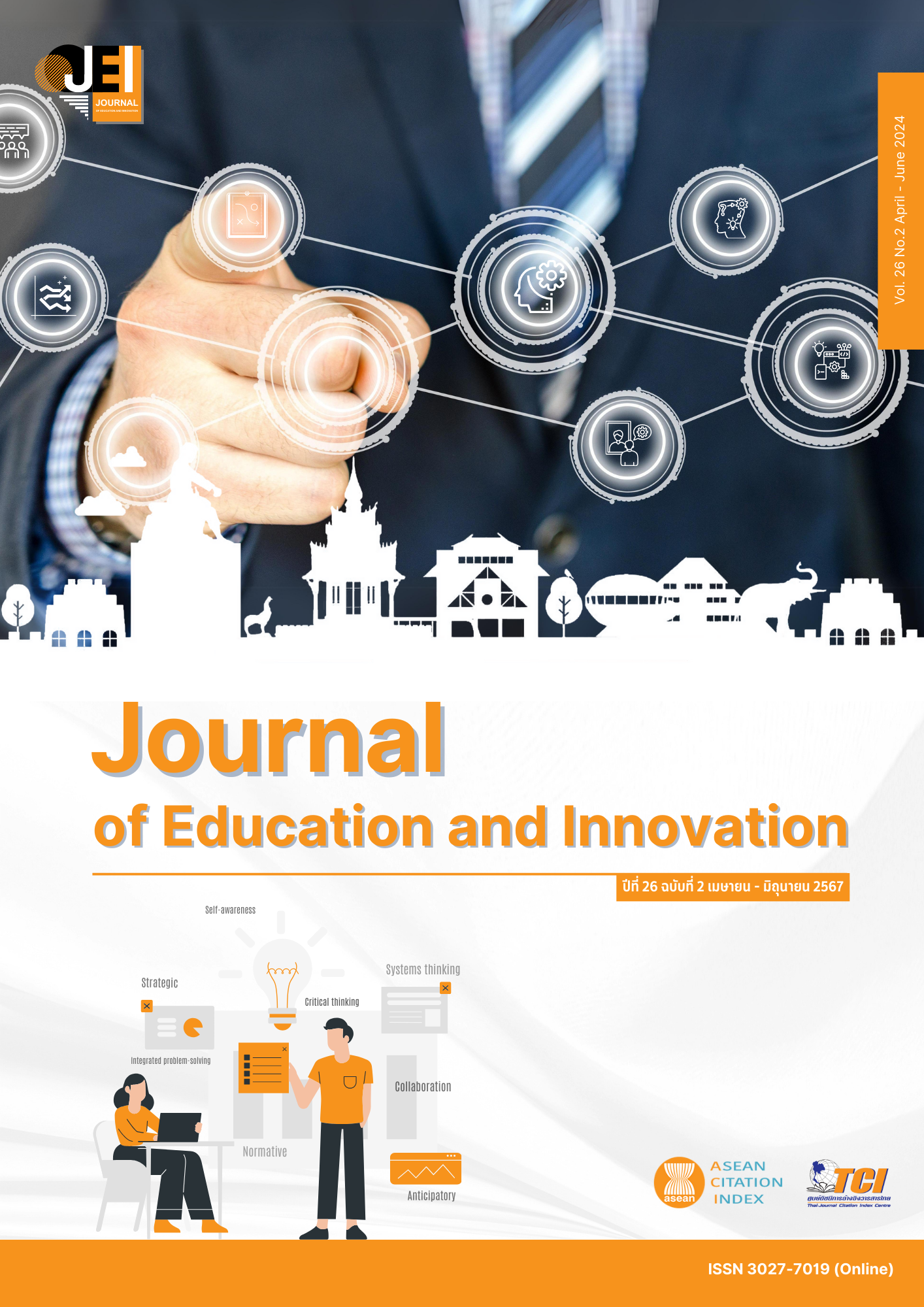STRATEGIES TO DEVELOP SELF-DISCIPLINED STUDENT UNDER THE SECONDARY EDUCATIONAL SERVICE AREA OFFICE CHAIYAPHUM
Main Article Content
Abstract
The purposes of this research were to study the compositions and indicators of self-discipline of students, to study the current conditions, desirable conditions, and the needs of the self-discipline of students, to develop strategies and evaluate the suitability and possibility of the strategies for the self-discipline of students under the Secondary Educational Service Area Office Chaiyaphum. The research was divided into 3 stages. Stage 1 was to study the compositions and indicators of the self-discipline of students. Stages 2 was to study the current conditions, desirable conditions, and the needs of the self-discipline of students. Stages 3 was to develop strategies and evaluate the suitability and possibility of the strategies for the self-discipline of students under the Secondary Educational Service Area Office Chaiyaphum. Mean, Standard Deviation, and Priority Needs Index were used for data analysis. The findings indicated that:
1. There were 4 compositions and 33 indicators of the self-discipline of students; 1) responsibility with 9 indicators, 2) punctuation with 6 indicators, 3) complying with rules and regulations with 3 indicators, and 4) the respect to people with 10 indicators. All compositions were in the highest level.
2. The current conditions, desirable conditions, and the needs of self-discipline of students under the Secondary Educational Service Area Office Chaiyaphum were found that; 1) the current conditions were in middle level, 2) the desirable conditions were in the highest level, and 3) the needs of self-discipline of students were found that punctuation was in the highest need level, respect to people was in the second need level, and complying with rules and regulations was in the lowest need level.
3. The overall results of the strategy development of the self-discipline of students under the Secondary Educational Service Area Office Chaiyaphum were found that the strategy development of the self-discipline of students under the Secondary Educational Service Area Office Chaiyaphum developed with the seminar by 5 experts including 1) vision, 2) 4 missions, 3) 4 goals, 4) 2 primary strategies, 5) 6 secondary strategies, 6) ways to use strategies to develop 6 main goals, 7) activities for self-discipline of student development, and 8) 3 conditions of success with suitability were in the highest level, and possibility were in the highest level.
Article Details

This work is licensed under a Creative Commons Attribution-NonCommercial-NoDerivatives 4.0 International License.
The owner of the article does not copy or violate any of its copyright. If any copyright infringement occurs or prosecution, in any case, the Editorial Board is not involved in all the rights to the owner of the article to be performed.
References
Changklang, S, Wangphanich, P, Klinkularb, P, & Chuanchom, S. (2017). Strategic for developing self-discipine in primary student’s coast of Thailand upper southern area. NRRU Community Research Journal, 11(2), 50-65.
Office of the Education Council. (2017). National Education Plan 2017-2036. Bangkok: Prikwarn Graphic.
Office of the Education Council. (2018). Guidelines for enhancing student discipline in basic educational institutions in terms of responsibility and punctuality. Bangkok: Prikwarn Graphic.
Office of the Education Council. (2018). Research and development of the model mechanisms for enhancing discipline in basic education institutions Responsibility and punctuality. Bangkok: Prikwarn Graphic.
Office of the Education Council. (2018). Synthesis result report the result of research and development of the model mechanisms for enhancing discipline in educational institutions at the basic education level. Bangkok: Prikwarn Graphic.
Office of the Education Council. (2019). A manual for enhancing student discipline in basic education institutes regarding compliance with rules and regulations, tact and respect for other people's rights. Bangkok: Prikwarn Graphic.
Pankam, K. (2005). The participatory process use – based self-discipline development of Ban Mai Sammakkhee School Students at Office of Chiang rai Educational Service Area (Region 3) (Master thesis). Changrai: Changrai Rajabhat University.
Pantawong, S, Nantasri, W., & Phengsawat, W. (2021). Development of student discipline at Chumchonbantoom School Under Buengkan Primary Education Service Area Office. UMT Poly Journal, 18(2), 199-210.
Phoemsukrungrueang, K. (2020). The student discipline enhancing in secondary school (Doctoral dissertation). Bangkok: Silpakorn University.
Raksongmuen, S, Wisalaporn, S, Wangpanich, P, & Chuanchom, S. (2014). Factors affecting to the discipline of secondary school students in the upper southern region. Journal of Education Thaksin University, 14(2), 55-70.
Royal Gazette. (2017). Constitution of the Kingdom of Thailand, B.E. 2560. Bangkok: M.P.T.
Srisa-ard, B. (2010). New revised preliminary research (9th ed.). Bangkok: Suwiriyasarn.
Srivorakul, T, Somsrisuk, A, & Phengsawat, W. (2022). The needs assessment for discipline development of students in schools under the Office of Sakon Nakhon Primary Educational Service Area 3. Journal of Roi Kaensarn Academic, 7(10), 377-392.
Taprab, N, Phusri, S, & Thee-Asana, S. (2019). The model for student’s desired characteristics development following in private schools in Chiyaphum. Journal of Graduate MCU Khon Kaen Campus, 6(3), 548-565.
Tonglad, S. (2021). Developing guidelines for strengthening students’self-discipline under the Office of Kalasin Primary Education Area 3 (Master thesis). Maha Sarakham: Mahasarakham University.
Wongvanich, S. (2005). Needs assessment research. Bangkok: Chulalongkorn University Printing House.


